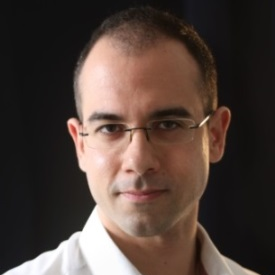Laser Applications in Micromachining and Surface Functionalization of Materials
A special issue of Materials (ISSN 1996-1944). This special issue belongs to the section "Optical and Photonic Materials".
Deadline for manuscript submissions: closed (20 July 2022) | Viewed by 16531
Special Issue Editors
Interests: laser texturing; laser-based surface functionalization; surface engineering; laser micromachining; advanced technology development; materials processing
Interests: laser texturing; laser-based surface functionalization; surface engineering; advanced technology development; materials processing; process modeling
Special Issue Information
Dear Colleagues,
Laser micromachining and surface functionalization of materials by laser processes have increasingly attracted the attention of scientists and technologists. Various approaches, from conventional laser micromachining to advanced processes and technologies, provide remarkable capabilities for processing several classes of materials. Consequently, complex surface textures and functionalities previously unattainable have been realized and investigated in view of their practical use. Of particular significance is the possibility of using higher laser powers and peculiar beam deflection systems to speed up laser processes in view of their industrial scalability. In this context, laser-generated surface functions such as self-cleaning, decoration, and biocompatibility are becoming more and more recognized in industry since they add a significant value to existing products. This so-called functional laser texturing arose in recent years and represents a very powerful tool for attaining advanced surface properties by creating well-defined surface patterns with micro- and nanometer resolution. In some areas, functional laser texturing has enabled disruptive technology approaches that were not possible before.
In this Special Issue, modern trends of laser micromachining approaches, ranging from direct laser writing to multibeam patterning approaches, will be highlighted and discussed. This includes the processing fundamentals, optimization schemes, and beam shaping methods, as well as the machining of novel and sophisticated materials. The focus is directed on laser-based surface functionalization for a wide set of applications such as tailored wettability, tribology, biocompatibility, decoration, antisticking surfaces, and antireflection. This explicitly includes use cases from industrial environments.
It is my pleasure to invite you to submit a manuscript for this Special Issue. Full papers, communications, and reviews are all welcome.
Dr. Tim Kunze
Dr. Sabri Alamri
Guest Editors
Manuscript Submission Information
Manuscripts should be submitted online at www.mdpi.com by registering and logging in to this website. Once you are registered, click here to go to the submission form. Manuscripts can be submitted until the deadline. All submissions that pass pre-check are peer-reviewed. Accepted papers will be published continuously in the journal (as soon as accepted) and will be listed together on the special issue website. Research articles, review articles as well as short communications are invited. For planned papers, a title and short abstract (about 100 words) can be sent to the Editorial Office for announcement on this website.
Submitted manuscripts should not have been published previously, nor be under consideration for publication elsewhere (except conference proceedings papers). All manuscripts are thoroughly refereed through a single-blind peer-review process. A guide for authors and other relevant information for submission of manuscripts is available on the Instructions for Authors page. Materials is an international peer-reviewed open access semimonthly journal published by MDPI.
Please visit the Instructions for Authors page before submitting a manuscript. The Article Processing Charge (APC) for publication in this open access journal is 2600 CHF (Swiss Francs). Submitted papers should be well formatted and use good English. Authors may use MDPI's English editing service prior to publication or during author revisions.
Keywords
- laser micromachining
- laser (multibeam) texturing
- laser-based surface functionalization
- surface engineering
- surface processing
- materials processing







